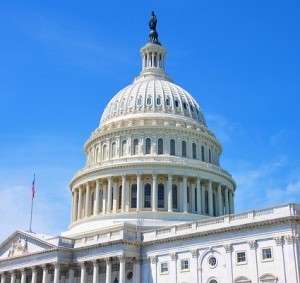Sequestration 101

With the deadline for the big budget cuts looming, you may have been hearing a lot of debate over “sequestration.” Here’s the skinny:
What is it?
Sequestration is a package of across-the-board spending cuts to the federal budget set to go into effect March 1, 2013 if Congress can’t agree on exactly how to reduce spending. The cuts will total $1.2 trillion over 10 years and would be split evenly between defense and domestic discretionary spending.
The History
It’s been a long time coming. With government leaders battling over how to improve the economy and reign in government spending, lawmakers agreed to sequestration back in 2011. The Budget Control Act of 2011 authorized an increase in the nation’s debt ceiling in exchange for $1.2 trillion in defined spending cuts and another $1.2 trillion in cuts to be determined by a bipartisan group of senators and representatives. In case the committee failed to reach an agreement on the additional $1.2 trillion, lawmakers included a provision in the bill that would automatically implement cuts.
It was a prospect considered so severe, the President said it would be “deeply destructive to national security, domestic investments, and core government functions.” The country is currently five days away from the deadline with no deal in sight.
What Will It Impact?
Social Security, Medicaid, Pell grants and veteran benefits are exempt from sequestration cuts, but experts agree that they’ll still be catastrophic with many significant government services arbitrarily interrupted. More than$500 billion will be cut from the Defense Department and other national security agencies. The rest would come from domestic services including parks, federal courts, the FBI, food inspections and housing aid. Individual states would also be hard hit. According to the White House, in Virginia sequestration would result in funds for 14,000 fewer public school students for example. Washington D.C. would lose nearly $80,000 in grants that support law enforcement and drug treatment.
For a look at how the sequester will affect the budget of your area, the White House has provided state-by-state breakdowns of the impact of the cuts on state funding. Find your state below:
Alabama, Alaska, Arizona, Arkansas, California, Colorado, Connecticut, Delaware, Florida, Georgia,
Hawaii, Idaho, Illinois, Indiana, Iowa, Kansas, Kentucky, Louisiana, Maine, Maryland, Massachusetts,
Michigan, Minnesota, Mississippi, Missouri, Montana, Nebraska, Nevada, New Hampshire, New Jersey,
New Mexico, New York, North Carolina, North Dakota, Ohio, Oklahoma, Oregon, Pennsylvania,
Rhode Island, South Carolina, South Dakota, Tennessee, Texas, Utah, Vermont, Virginia, Washington,
West Virginia, Wisconsin, Wyoming.
Photo Courtesy, Glyn Lowe Photoworks.




